
American Wirehair Overview
| OFFICIAL NAME | American Wirehair |
| COMMON NAME | American Wirehair |
| PET HEIGHT | 9 to 11 inches |
| PET WEIGHT | 8 to 12 pounds |
| LIFESPAN | 10 to 16 years |
| GOOD WITH | cats, children, dogs, families, seniors |
| TEMPERAMENT | affectionate, bold, sociable |
| INTELLIGENCE | high |
| SHEDDING AMOUNT | normal |
| PLAYFULNESS | medium |
| ENERGY LEVEL | calm |
| VOCAL LEVEL | infrequent |
| COAT LENGTH | short |
| COLORS | black / ebony, blue / gray, cream / beige / tan, fawn, lavender / silver, red / orange, white |
| OTHER TRAITS | easy to groom, easy to train, friendly toward humans, friendly toward other pets, friendly toward strangers, good for first-time pet owners, good lap cat, high potential for weight gain, high prey drive, tolerates being alone, tolerates being picked up |
The American wirehair cat is a breed native to New York, with a wiry, crimped coat resulting from a natural genetic mutation. These cats are loving, easygoing, and affectionate companion animals. Like true New Yorkers, these kitties have an independent streak that makes them a great fit for owners with busy lifestyles.
American wirehairs are a fairly rare cat breed, despite the fact that they are relatively well-known. These cats typically cost between $800–$1,200 from a breeder, depending on pedigree. If you're looking for a new family pet or simply want to learn more about this breed, here's everything you need to know about American wirehair cats and kittens.
Appearance
As their name might suggest, American wirehair cats have coarse, thick hair that is rough to the touch and wiry in appearance. They have medium-sized, muscular bodies that appear round and thick in shape, and they typically weigh between 8–12 pounds.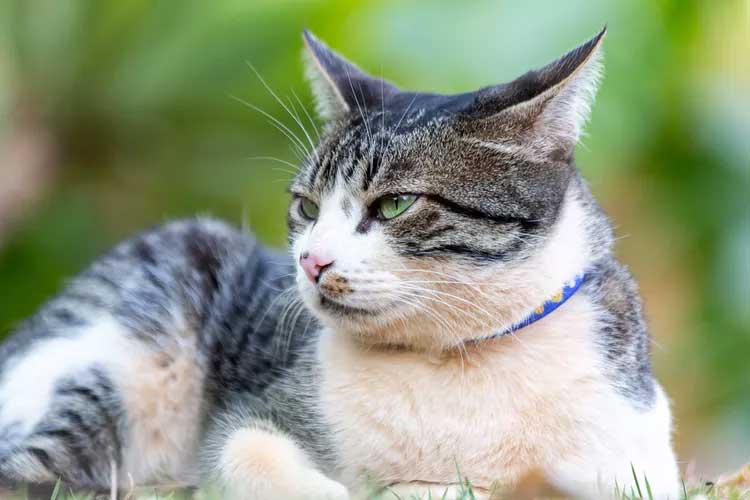
This cat breed has a crimped coat with bent or waved hairs on her body and in her ears—some even have curly whiskers! A short-haired cat, American wirehairs can be solid black, blue, white, red, or cream. Coat patterns for these cats include chinchilla (a silver-like color), smoke, cameo, calico, tabby, and bicolor. They have large eyes that tilt slightly upward at the outer corners. American wirehairs' eye color can be blue, green, or gold.
Because the crimped texture of American wirehairs keep loose hairs tight to their body, some consider them to be a hypoallergenic cat. And while they're not completely allergen-free (no cat is!), their coat keeps shed hairs at bay and can be slightly less irritating to some owners with allergies. Before bringing home an American wirehair kitten, spend time with the breed and see how your allergies react.
The American wirehair is often compared to the American shorthair. And while they do have many similarities, their main difference lies in hair texture—the American shorthair doesn't have the wirehair's coarse, curly coat.
Temperament
American wirehairs are a true companion breed, with a loving, laid-back attitude. This easygoing cat gets along with pretty much everyone—dogs, other cats, kids, and seniors included. This affectionate breed has plenty of love to give and is likely to form an attachment with every member of the household.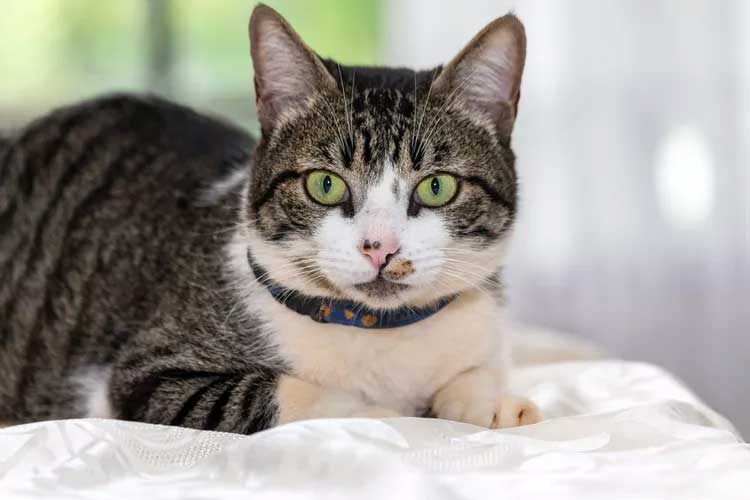
Wirehairs are smart, playful, and independent. They're active and affectionate, but not hyper or demanding. These well-mannered cats love interactive play with their humans but are perfectly content to spend time playing alone with toys as well.
When they're not playing, they love to curl up next to their humans and offer comforting cuddles and purrs. These cats are sweet, gentle, and friendly family pets.
Living Needs
American wirehairs are pretty undemanding as far as pet cats go. Thanks to their independent nature, your wirehair is fine to be left alone for a while without being lonely or anxious. Busy people who are frequently out of the home are a fine fit for this relaxed breed—but you still need to give her ample love and affection when you're home.These placid, patient cats aren't very noisy and prefer to communicate their needs in other ways. You'll have to pay close attention to your wirehair's body language and demeanor, since she won't always be vocal about her desires. On the positive side, American wirehairs make great apartment pets because they're unlikely to disrupt neighbors with loud meowing.
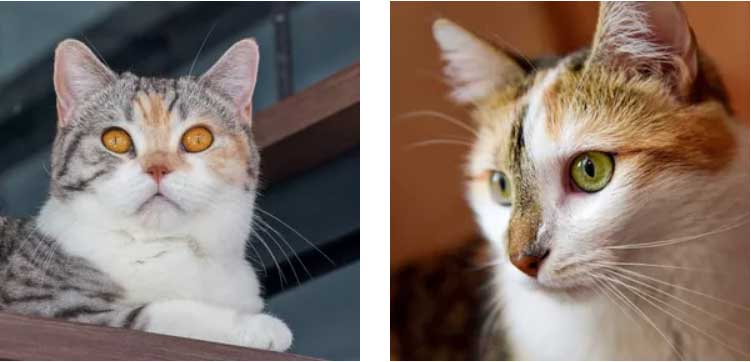
More than just polite roommates, American wirehairs are incredibly loving and friendly to other pets and people. They'll get along well with most members of the family and visiting guests, and love to cuddle with kids (as long as the kiddos are gentle with cats!).
These cats are true mousers who love to hunt. Rodents and insects around their domain won't stand a chance. If they're short on prey to stalk through the halls of their home, you'll likely find them bird watching from a window seat. American wirehairs will appreciate interactive toys left out to help them hone those natural hunting skills.
"They will play with toys, but also love self-play, which makes them a great companion for [pet] parents living alone," says Natalie L. Marks, DVM, CVJ and Royal Canin veterinarian partner.
Care
Grooming your American wirehair cat is surprisingly easy, considering their heavy, textured coat. Frequently brushing their unique coat can actually be damaging, so it's best to limit brushing and do it only when necessary—like during periods of heavy shedding. Occasional bathing can help rid your American wirehair of dead hair and keep her coat from getting greasy. She'll also need regular nail, ear, and dental care.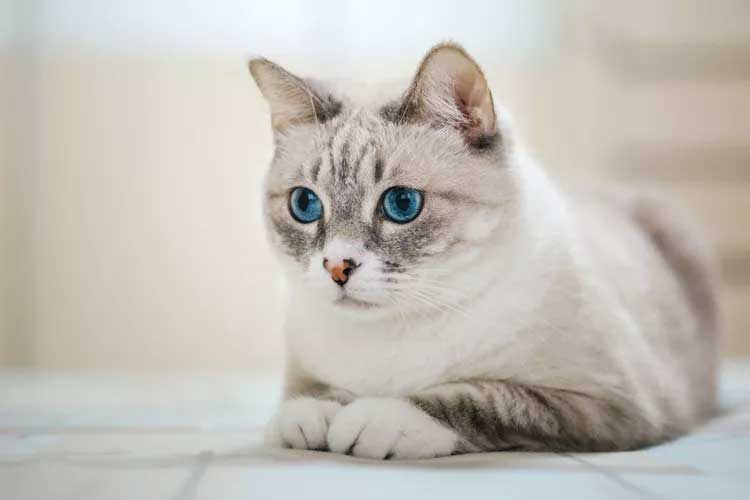
The American wirehair keeps the same exercise regiment as most other cat breeds, with regular bursts of energetic play paused by long hours of sleep. Toys, cat trees, and one-on-one play will help keep your cat active.
This super-smart cat breed is easy to train and loves to learn. Introducing them to scratching posts and litter boxes will usually be an easy task.
Early socialization helps an American wirehair feel comfortable and safe. When this cat has been properly introduced to friendly people and pets, she will be friendly and playful with almost anyone she encounters.
The American wirehair should be fed a diet of high-quality cat food recommended by your vet. "Good, consistent nutrition and weight control is a must to prevent them from becoming overweight," Marks says.
Health
American wirehairs have a lifespan of 10–16 years and are typically healthy pets.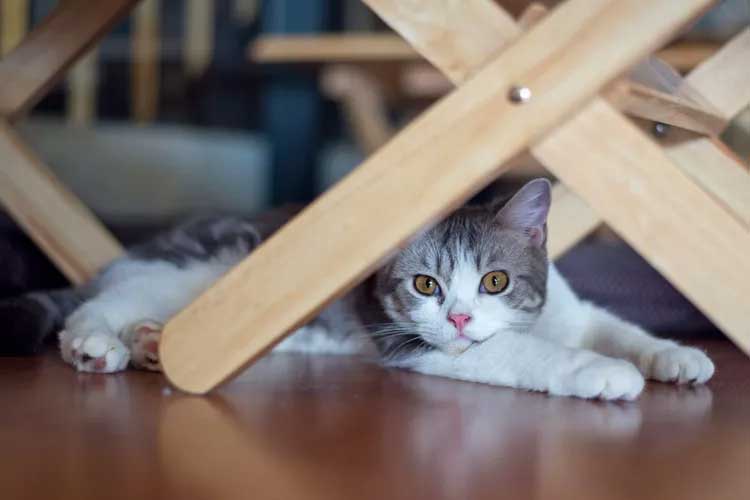
The American wirehair's greatest health risks include hypertrophic cardiomyopathy (HCM) and hip dysplasia. Reputable breeders will screen for health issues in your kitten, but it's important to have them screened regularly into adulthood. HCM and other health problems can go undetected until later in your cat's life.
History
The first recorded American wirehair was born in upstate New York in 1966, according to the Cat Fanciers' Association. A spontaneous mutation occurred in a litter of farm kittens, resulting in one cat with the breed's signature kinky, crimped coat. This kitten was then carefully bred from, preserving the result of the original mutation. Genetic mutations aren't altogether rare and occur all around the world, but this specific one has yet to be replicated in another country.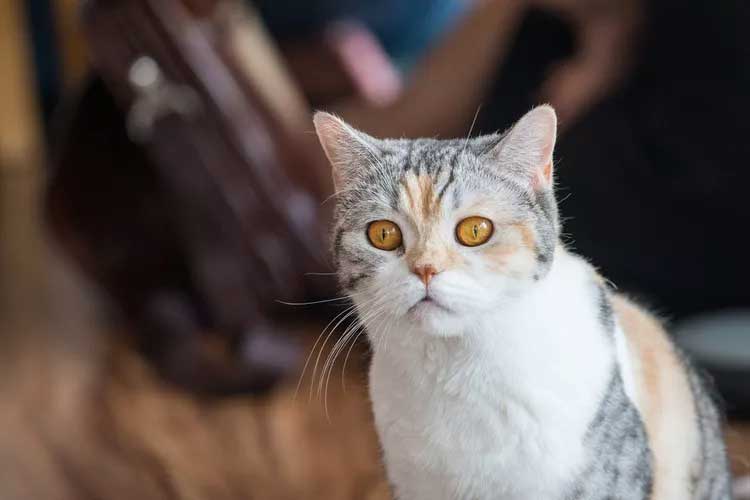
Because they're a relatively new breed, the American wirehair continues to be refined through breeding and remains relatively rare today. The breed is often compared with the American shorthair. Though they have differences in coat and some facial features, the American shorthair cat is still sometimes used in breeding programs for wirehairs.
Fun Facts
American wirehairs were named the rarest breed of cat in the Cat Fancier Association's 2017 round-up of 41 registered breeds.Some describe the American wirehair's hard, springy coat as similar to steel wool.
The American wirehair is often mistaken for the American shorthair, and the similar-looking (and behaving!) breeds are regularly crossed.